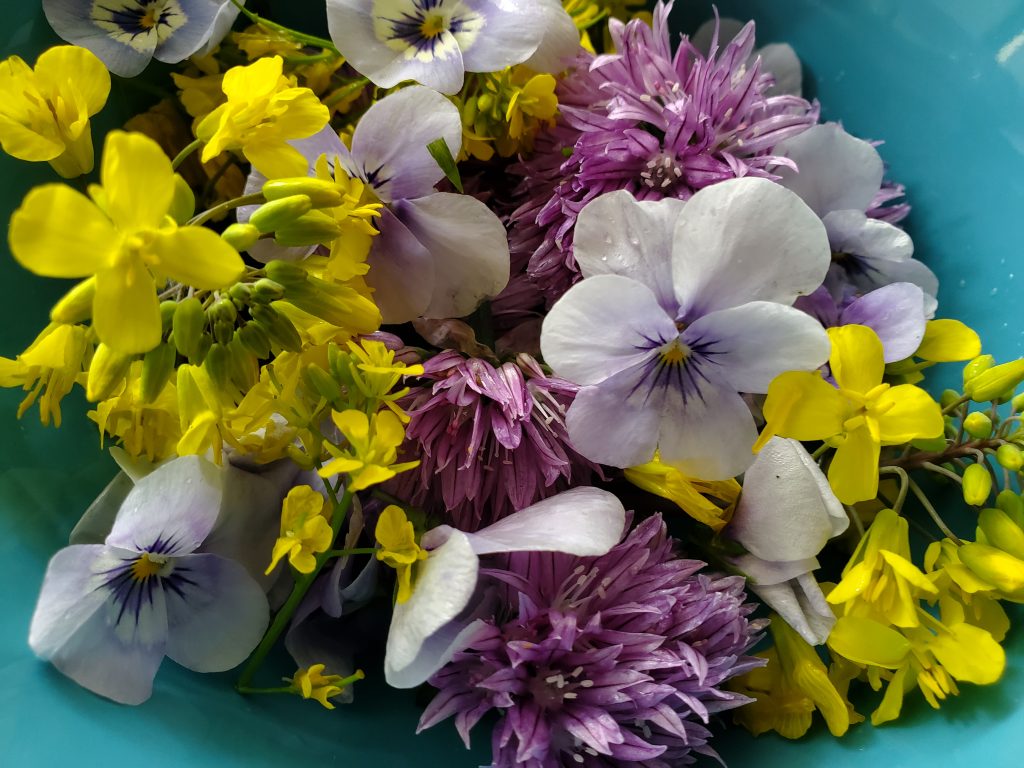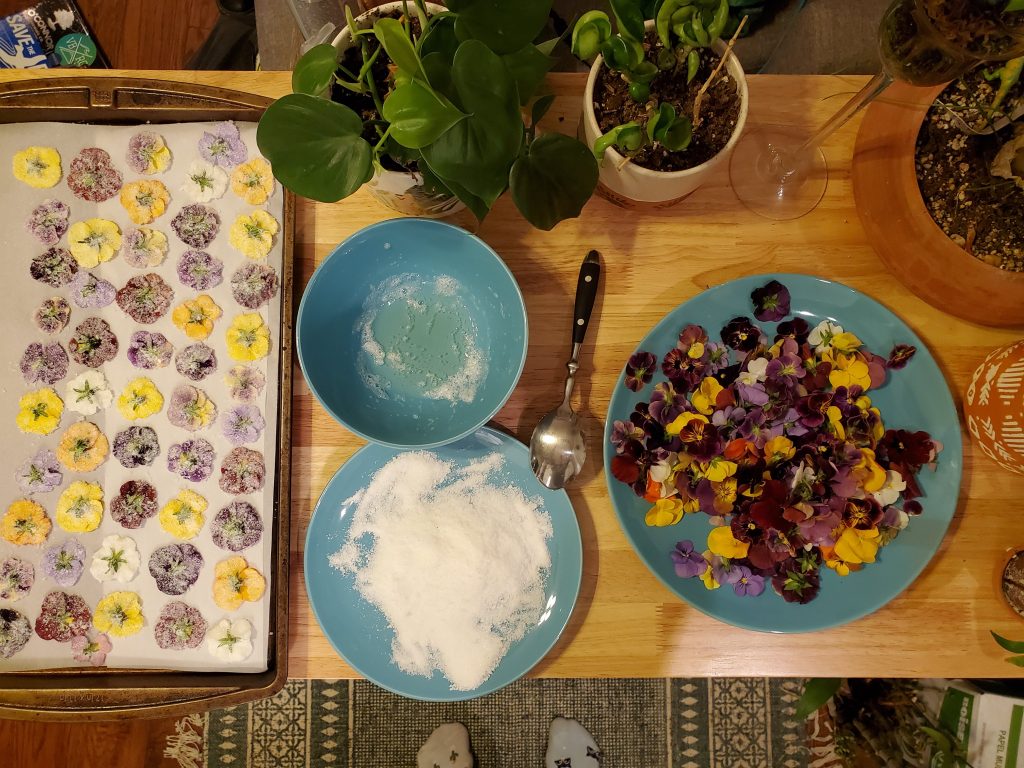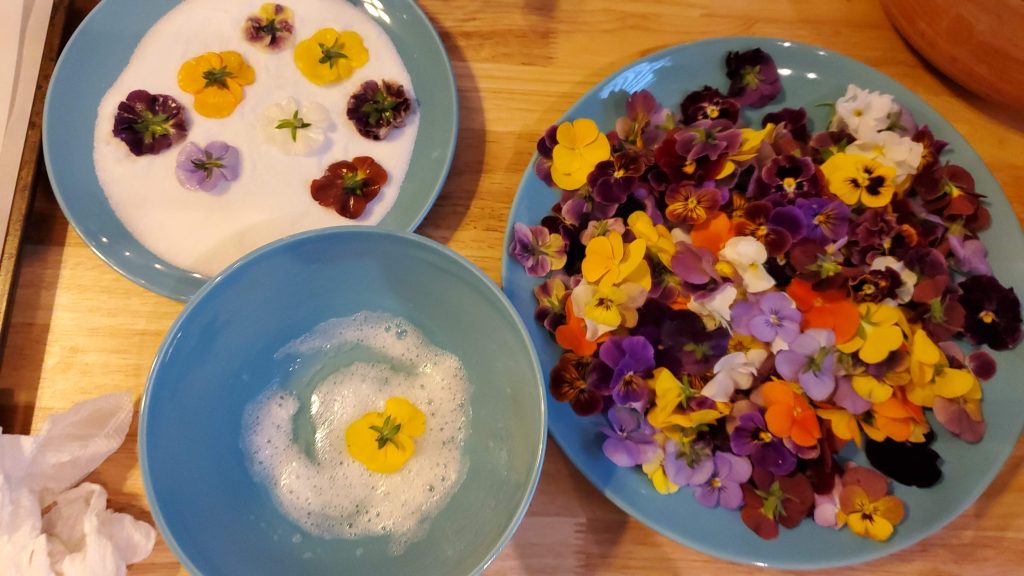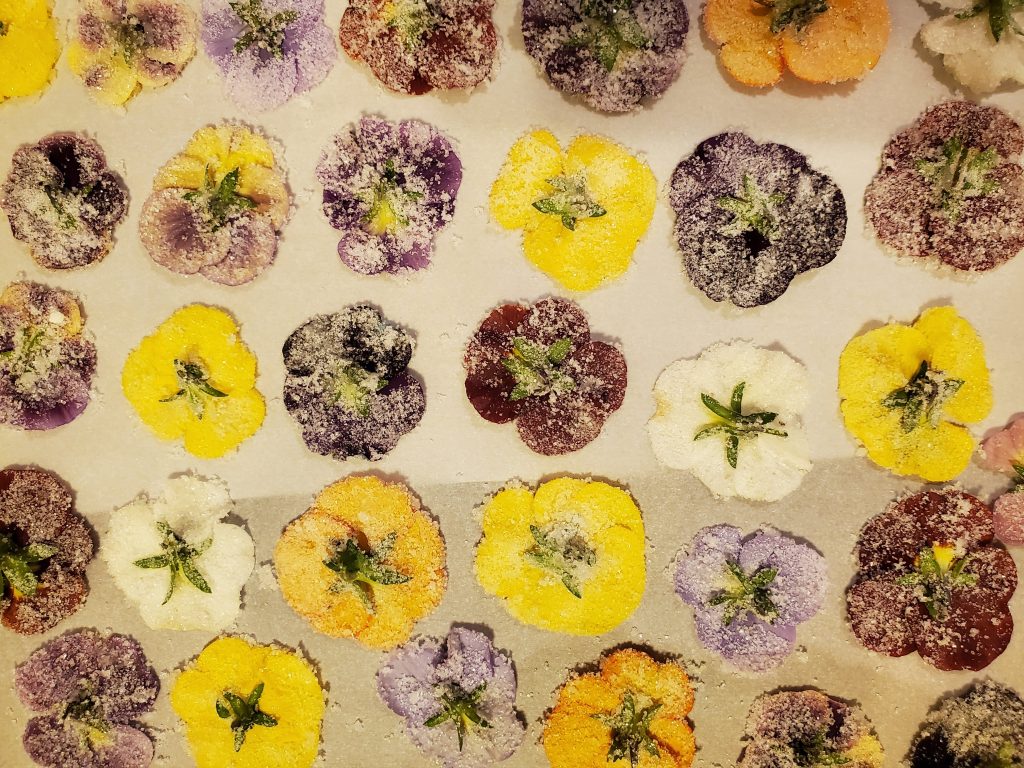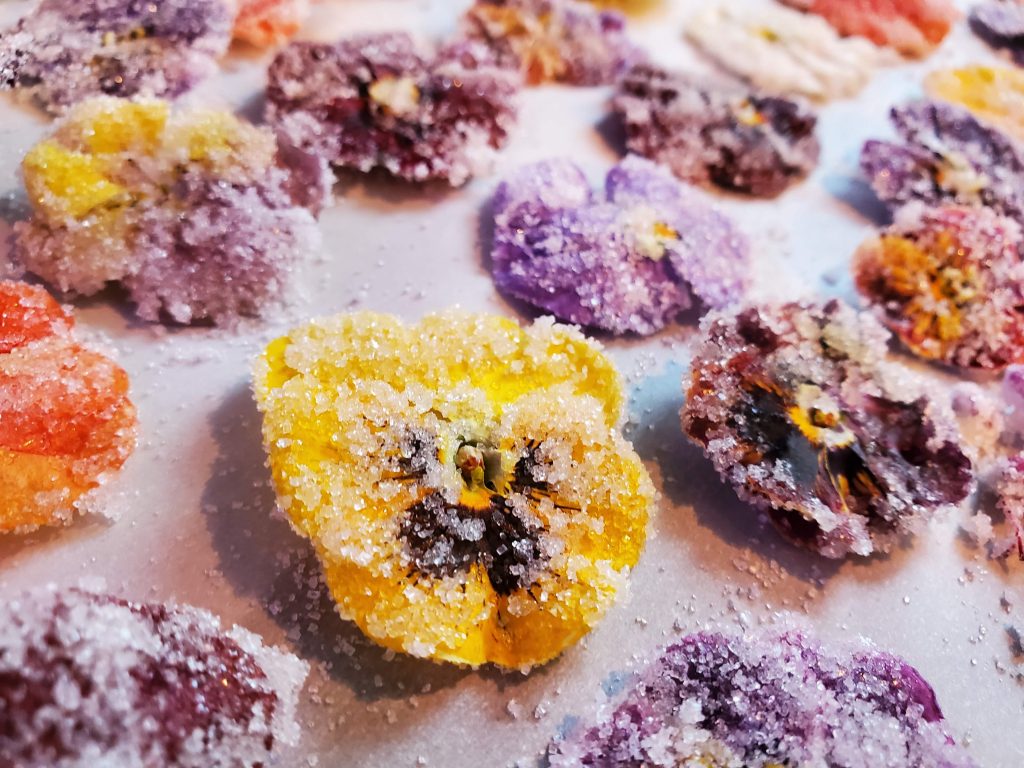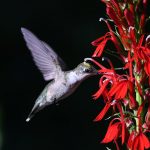Incredible Edible Flowers
With society becoming more eco-conscious, many people shifting to a more plant-heavy diet. Roasted root veggies, fruit smoothies filled with superfoods, and every type of salad imaginable are flooding our news feeds daily, with endless recipes to try… but when was the last time you ate flowers? There’s a whole chapter of the culinary world involving edible flowers, many of which you can easily grow at home!
Flowers have been part of our diets as far back as we have records, from civilizations around the world, resulting in a variety of edible flowers available today. Squash blossoms, nasturtiums, calendula, chives, and violas are commonly grown flowers, but some can be foraged, like redbud flowers, wisteria blooms, and honey locust. When foraging, never eat anything you haven’t 100% identified correctly, and keep in mind where it was grown. A local park that has people spraying, or your neighbors yard might not be the best place to harvest. Many of these can be tossed right on a salad, adding new flavors, textures, and beautiful pops of color.
If you’re feeling a bit more creative, you can make syrups (check out our blog post on redbud syrup), or even candy the flowers! Violas and pansies work really well, as they have more surface area and are fairly flat. Collect your flowers, rinse lightly, and let dry.
Superfine sugar is ideal when achieving the crystal-like effect, but if you’re like me and only have regular granulated sugar on hand, you can run the sugar through a food processor. Spread the sugar out on a plate for coating, and set aside. Next, you’ll need egg whites, or an egg white substitute. Whip the egg whites, and paint over the flowers – I found it easier to simply use my fingers, as I had more control. Coat the flowers in sugar, and let dry on a tray lined with parchment or wax paper. Store in an air tight container, and use on salads, desserts, or baked goods for an instant wow factor!


